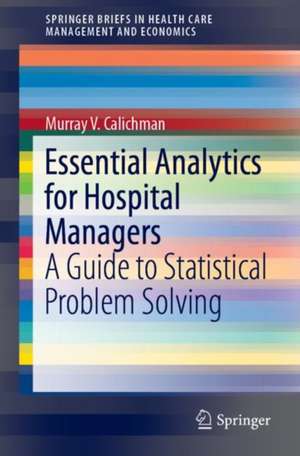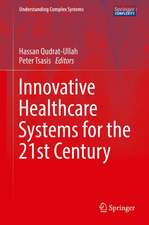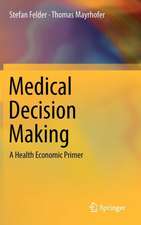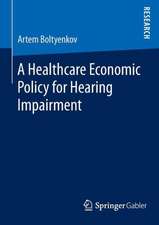Essential Analytics for Hospital Managers: A Guide to Statistical Problem Solving: SpringerBriefs in Health Care Management and Economics
Autor Murray V. Calichmanen Limba Engleză Paperback – 8 mai 2019
Preț: 442.44 lei
Nou
Puncte Express: 664
Preț estimativ în valută:
84.67€ • 88.07$ • 69.90£
84.67€ • 88.07$ • 69.90£
Carte tipărită la comandă
Livrare economică 15-29 aprilie
Preluare comenzi: 021 569.72.76
Specificații
ISBN-13: 9783030163648
ISBN-10: 3030163644
Pagini: 74
Ilustrații: IX, 72 p. 14 illus., 9 illus. in color.
Dimensiuni: 155 x 235 mm
Greutate: 0.13 kg
Ediția:1st ed. 2019
Editura: Springer International Publishing
Colecția Springer
Seria SpringerBriefs in Health Care Management and Economics
Locul publicării:Cham, Switzerland
ISBN-10: 3030163644
Pagini: 74
Ilustrații: IX, 72 p. 14 illus., 9 illus. in color.
Dimensiuni: 155 x 235 mm
Greutate: 0.13 kg
Ediția:1st ed. 2019
Editura: Springer International Publishing
Colecția Springer
Seria SpringerBriefs in Health Care Management and Economics
Locul publicării:Cham, Switzerland
Cuprins
Work Simplification: A Method to Improve Processes – A Work Flow Diagram, A Little Logic.- The Linen Multiplier: Derivation of the Linen Multiplier – Simple Mathematics, Simple Logic.- The Emergency Room Holding Area: How Many Beds – The Use of Averages, Standard Deviations and Confidence Levels.- Determining “Par” Levels for Patient Supply Items: How Many Supply Items - The Use of Averages, Standard Deviations and Confidence Levels.- Merging Staffing Standards with a Patient Classification System: The Use of Weighted Averages.- Productivity & Cost Application: An Analytics Reporting Program for Department Managers and Administrators.- An CCU Bed Expansion: How many Beds - Use of Poisson Arrival Rates and Summed Poisson with Truncated Data.- Inventory Management: The Minimization of the Total Costs of Ordering and Holding Supplies.- Forecasting Resource Needs: The Use of Trend Lines and Seasonality.- Computer Simulation: Determining an Emergency Department Trigger (to Enact a Plan of Action).- Use of Linear Programming: To Maximize Net Revenue (Optimum Pricing).- Use of Linear Programming: To Eliminate Hospital Overcrowding (Optimum O.R. Scheduling).-
Notă biografică
Murray V. Calichman obtained BSc. in Management from Rensselaer Polytechnic Institute (1964) and took graduate courses in operations research at the Bernard Baruch School of Business Administration at City College, NY, USA. He was president of GBC Consulting Corporation and provided management engineering services to hospitals for 35 years before becoming director of Operational Research and Analytics for St. Francis Hospital/Catholic Health Services of Long Island for 11 years.
Textul de pe ultima copertă
This book provides practical applications of statistical and mathematical concepts to resolve common issues in hospital management. Each chapter discusses a key component of hospital operations, such as maximizing hospital profitability through pricing optimization, forecasting facility requirements from historical data, and determining optimal patient schedules to fully utilize hospital resources in order to eliminate over-crowding in the emergency department. Structured by the degree of mathematical complexity, this professional book utilizes problem-solving methodologies ranging from basic statistical concepts (means and standard deviations) to more advanced statistics (Poisson distributions and queuing theory). Concluding with computer applications and simulations, the practical examples will help hospital managers to optimally and innovatively make use of linear programming. The book’s main goal is to make hospital personnel more aware of the benefits of management science methodologies that are not usually employed in today’s hospitals.
Caracteristici
Provides valuable, concrete tools for solving hospital problems in operations, finance and nursing Highlights various areas of hospital operations that can be significantly improved Includes numerous step-by-step tutorials for hospital administrators

































